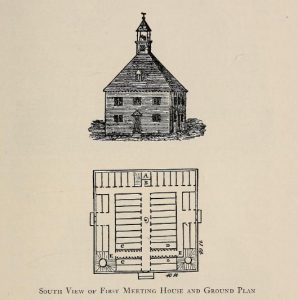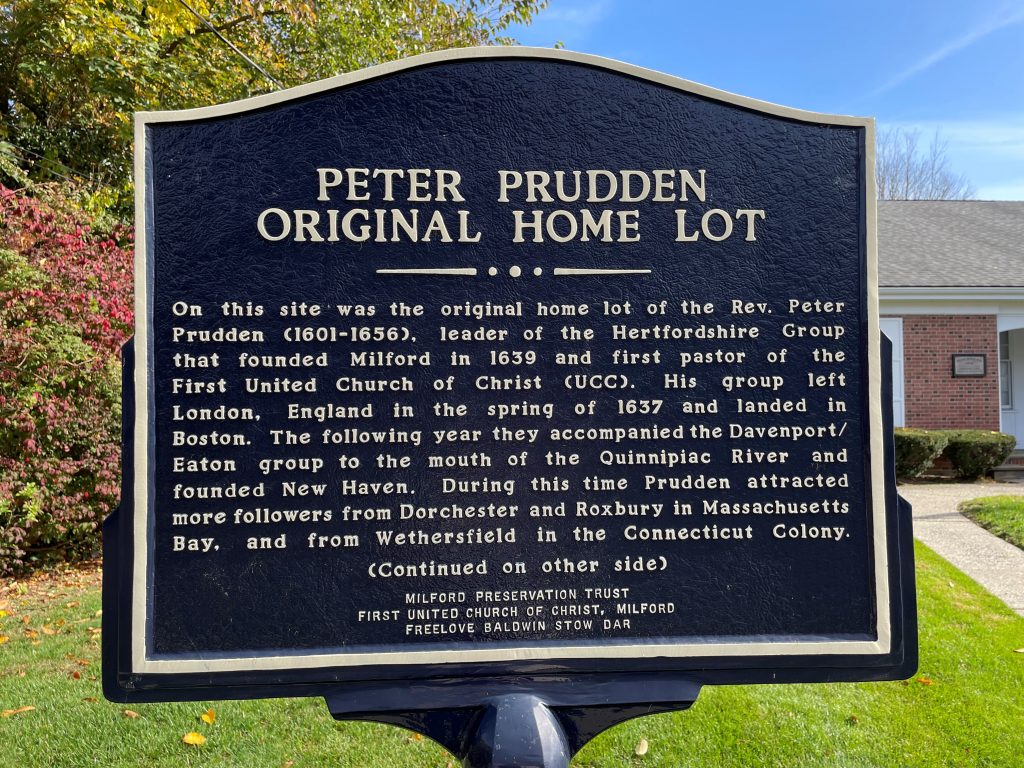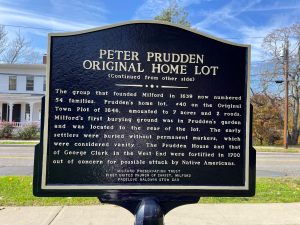By Emily Clark
In the early 1600s, many Europeans left their homeland to seek religious freedom in America as part of the Puritan migration. Not only did a good number of them establish their own churches and congregations, but they were also instrumental in establishing some of the oldest European communities in Connecticut, including the city of Milford.
Departure from England
Called one of the “worthiest of the honored founders of New England,” Reverend Peter Prudden was born in Hertfordshire, England, in 1601 during the reign of Queen Elizabeth I. He lived in London as a child and, upon graduation from Cambridge University, entered the ministry. Soon after the death of his first wife in 1635, Prudden—at odds with King Charles I’s church and its rigid ways—prepared to emigrate to the New World. As an influential minister, he had followers ready to leave with him, as well as leaders and other clergymen such as John Davenport, Theophilus Eaton, and Samuel Eaton. In the spring of 1637, they left London and sailed for America.
After several months deliberating where to settle in the Boston area, Prudden declined an invitation to become pastor at a church in Dedham, Massachusetts. Instead, he chose to leave with his second wife, Joanna, and preach for a short time in Wethersfield, Connecticut. In late 1638, accompanied by some of his original followers from England, Prudden made his way south, eventually reaching the mouth of the Quinnipiac River and what today is New Haven. While his companions, Theophilus Eaton and John Davenport, founded New Haven, Prudden traveled further south and established a church of his own.
The Founding of “Milford Church”

First Meeting House in Milford – History of Milford, Connecticut, 1639-1939 by the Federal Writer’s Project for the State of Connecticut
In February 1639, Prudden’s group negotiated with the Paugassetts for parcels of land called Wepawaug which included the area from New Haven to the Housatonic River and parts of modern-day Derby and Orange. They named the new settlement Milford, as the founders realized a stream running into Long Island Sound could easily become the location of a mill.
Six months later, Prudden and fifteen families founded the First Church of Christ (also called the Milford Church and now the First United Church of Christ Congregational). A facsimile of the “Milford Church Covenant,” written by Prudden, describes how “the Church of Christ at Milford was first gathered . . . upon Aug 22, 1639.” Prudden officially became the first pastor the following spring in April 1640.
As settlers ventured into Milford and the town grew, Rev. Prudden continued to hold a position of prominence as pastor and founder. The town gave him a building lot at the present-day addresses of 55 and 67 Prospect Street—one of the town’s most historic streets today with many of its oldest homes. The approximately seven-acre property included his extensive garden and an area that became Milford’s first graveyard, where the community buried some of its earliest residents.
“Useful in His Place and of High Esteem”
For the next 16 years, Peter Prudden served his church and city. As descendant Lillian Eliza Prudden wrote, “The history of Peter Prudden is that of the town and church of Milford. The unpainted, peaked-roofed church which was erected in 1640 was near enough for him to hear the drum that called the people together for service, or the voice of the sentinel who from the church turret warned them of impending danger.” In August 1656, Peter Prudden died in the city he helped found and is buried in his garden beside his infant son. He was survived by his wife, Joanna, and nine children (the descendants of whom continued to reside in and around Milford for years to come). Leading Massachusetts Puritan John Winthrop reportedly noted that Prudden “was useful in his place and of high esteem in the colony.”
Though no stone or epitaph indicates his grave, the Milford Preservation Trust, First United Church of Christ, and the Daughters of the American Revolution erected a roadside marker near the site of his former home on Prospect Street in 2017. A pioneer preacher, a Puritan, and a scholar, Prudden devoted his life to his ministry, baptizing hundreds and increasing the population of his church community, proving the scope of his impact on Milford.
Emily Clark is a freelance writer and an English and Journalism teacher at Amity Regional High School in Woodbridge.









